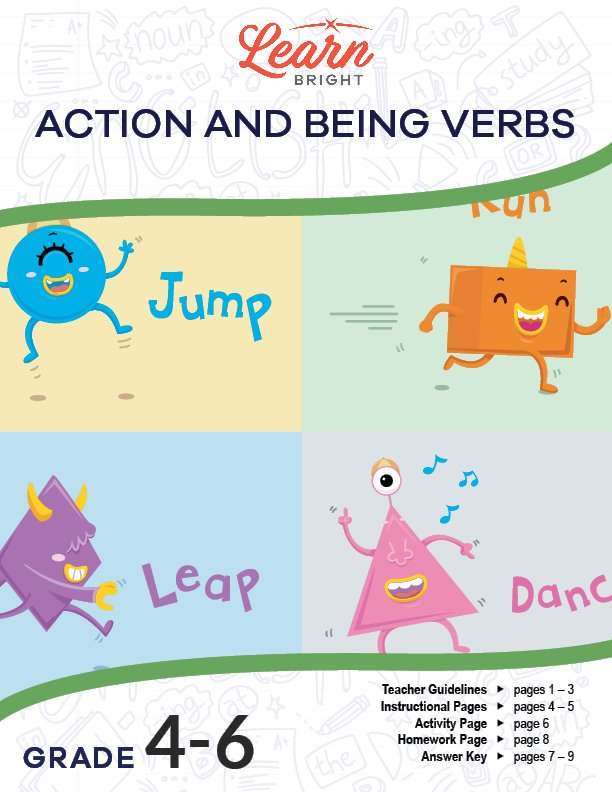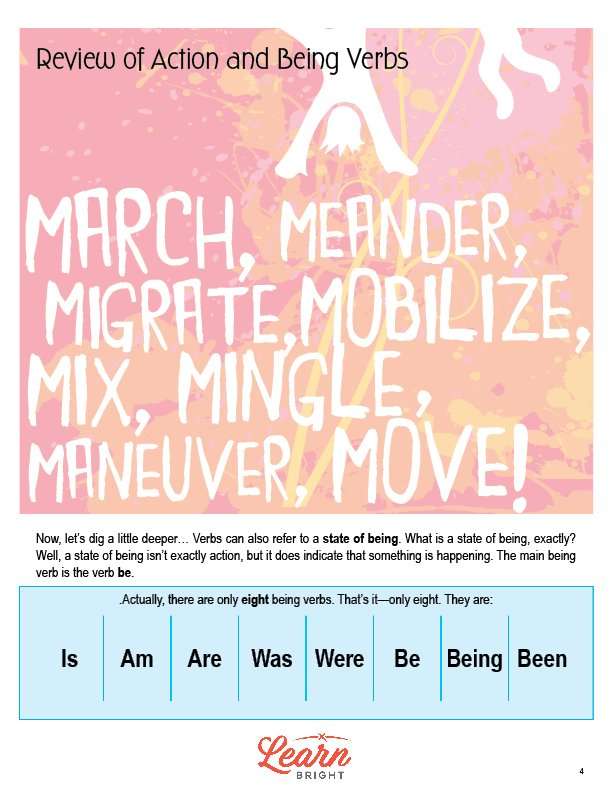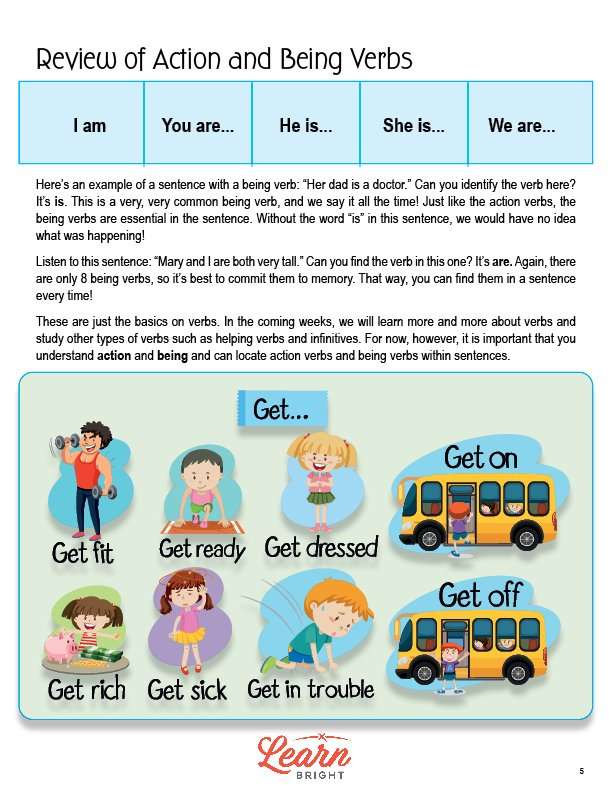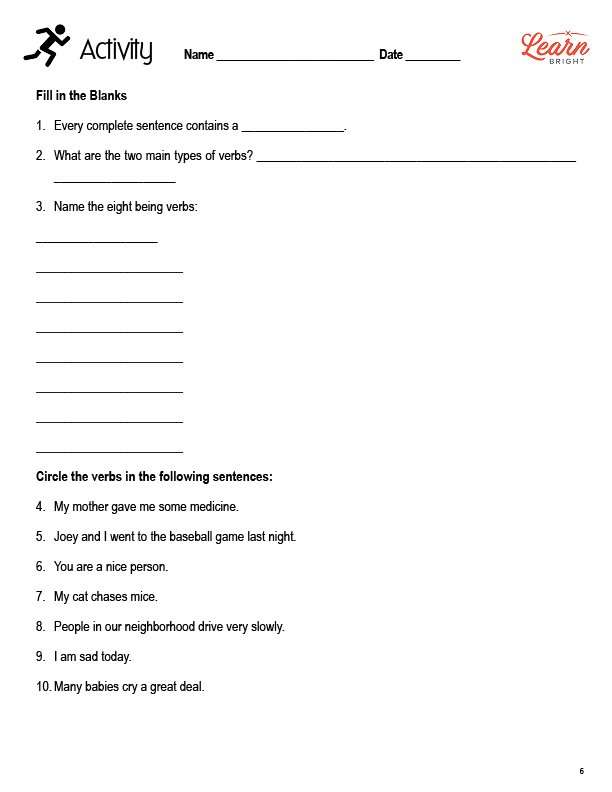Description
What our Action and Being Verbs lesson plan includes
Action and Being Verbs introduces students to the function of verbs within sentences. This interactive lesson explores basic action and being verbs with collaborative learning opportunities where students share their responses with the class. At the end of the lesson, students will have gained an understanding of the function of verbs within sentences and will have explored basic action and being verbs. This lesson is for students in 4th grade, 5th grade, and 6th grade.
Classroom Procedure
Every lesson plan provides you with a classroom procedure page that outlines a step-by-step guide to follow. You do not have to follow the guide exactly. The guide helps you organize the lesson and details when to hand out worksheets. It also lists information in the green box that you might find useful. You will find the lesson objectives, state standards, and number of class sessions the lesson should take to complete in this area. In addition, it describes the supplies you will need as well as what and how you need to prepare beforehand. The supplies you will need for this lesson are the handouts; markers; index cards; a chalkboard, whiteboard, or overhead projector; and student writing materials. To prepare for this lesson ahead of time, you can prepare two index cards for each student.
Teacher Notes
The teacher notes page includes lines that you can use to add your own notes as you’re preparing for this lesson.
ACTION AND BEING VERBS LESSON PLAN CONTENT PAGES
Review of Action and Being Verbs
The Action and Being Verbs lesson plan includes two content pages. At the end of the second Classroom Procedure page, the lesson includes some information that you can share with your students about action verbs. It states that verbs are a basic part of speech and that all complete sentences have a verb. Verbs often show action (like the verbs run, play, and sleep). We call these action verbs, and they are important because they tell us what is happening.
The content pages begin by stating that verbs can refer to a state of being. This indicates that something is happening. We call these verbs being verbs, and the main one is the verb be. We have eight being verbs total: is, am, are, was, were, be, being, and been.
The lesson includes an example sentence that uses a being verb: Her dad is a doctor. In this example, the being verb is the word is. This is one of our most common being verbs. Though they seem simple, we need being verbs to tell us what is happening in a sentence. Without them, we wouldn’t be able to understand. Since we only have eight being verbs, it’s helpful to memorize them.
The lesson closes by stating that this is simply an overview of some basic kinds of verbs, and that students should look forward to learning about the other types as well, like helping verbs and infinitives. Until then, understanding action and being verbs and being able to find them in sentences is very useful.
ACTION AND BEING VERBS LESSON PLAN WORKSHEETS
The Action and Being Verbs lesson plan includes two worksheets: an activity worksheet and a homework assignment. You can refer to the guide on the classroom procedure page to determine when to hand out each worksheet.
FILL IN THE BLANKS ACTIVITY WORKSHEET
For the activity worksheet, students will first fill in the blanks using information from the lesson. They will then read six sentences and will circle the verbs in each sentence.
ACTION AND BEING VERBS HOMEWORK ASSIGNMENT
The homework assignment asks students to complete four tasks. They will list five action verbs; list all eight being verbs; make sentences with three of the action verbs that they used, circling each verb; and make sentences with three of the being verbs, circling each verb.
Worksheet Answer Keys
This lesson plan includes answer keys for the activity worksheet and the homework assignment. If you choose to administer the lesson pages to your students via PDF, you will need to save a new file that omits these pages. Otherwise, you can simply print out the applicable pages and keep these as reference for yourself when grading assignments.











